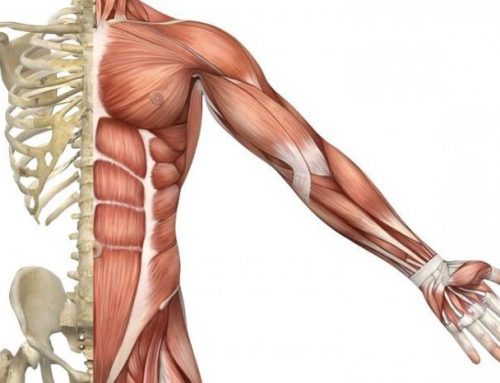It would be naive to believe that training methods have not changed over the existence of bodybuilding. However, this is not always paid attention to, mindlessly copying the training methods of the 60-70s of the last century.
Humanity, in general, develops through the use and multiplication of experience and knowledge accumulated by previous generations. The same applies to bodybuilding as one of the areas of knowledge. Therefore, it makes no sense to repeat mistakes and blunders that were made by athletes of previous generations. Theory without practice is dead, but the same can be said about practice without theory. It’s risky to stick your fingers in an outlet to see if there is voltage. If we follow the same path in our training, we will, at best, not significantly harm our health. What to do? There is only one way out – to learn from the mistakes of others. To do this, it is necessary to know what paths athletes of previous generations followed in pursuit of their goals.
This, and the following chapters, offer a retrospective analysis of the various training methods used by lifters in different periods of bodybuilding development.
The main method used in the training of the period of 70-80 years was the pyramidal system of increasing weights and the repetitive principle of work.
What is the repetitive principle of work? For example, with a weight that only allows you to do 10 reps, you can only do one approach with 10 reps – in the second approach, the number of reps will drop. But, as we have already learned, maximal work should not be performed all the time. Therefore, in order to perform several approaches with this weight (allowing you to perform 10 reps), we decided not to do all 10 reps at once, but to limit ourselves to a certain number of reps. But what should be the minimum number of repetitions in this case to develop muscle mass? Let me remind you that the creatine phosphate source of energy supply for muscle contraction by 30 seconds is approximately 50% of the total participation of all other sources. Therefore, the duration of work should not be less than 30 seconds (in the case of the repetitive method).
Dividing 30 seconds by the average duration of one repetition – 6 seconds – we get the minimum number of repetitions – 5 repetitions. So, the minimum number of repetitions that can be applied in a repetitive method of work should be at least 5. As we know, 10 reps can be performed with a weight of 80% Mx. At this point, another term to be introduced is the repetition maximum (RM) or the maximum number of repetitions (MRC). The repetition maximum for an 80% weight would be 10 reps. We have expressed the weight used as a percentage of the maximum weight, but the number of reps used can also be expressed as a percentage of the maximum possible number of reps with that weight. In the case of using 80% of the weight, 5 reps would be 50% of the maximum possible (of 10).
The working number of repetitions, which is 50% of the maximum possible with any weight, was taken as a basis. As a result, the working number of repetitions with different weights is as follows:
The working number of repetitions with different weights is as follows
- with a weight of 80% of the maximum – 5 reps (from 10).
- With 75% weight – 6 reps (from 12)
- With 70% weight – 7 reps (from 14)
- With 70% weight – 7 reps (from 14)
- with 65% weight – 8 reps (from 16)
- with 65% weight – 8 reps (from 16)
- with 60% weight – 9 reps (from 18)
- with 60% weight – 9 reps (from 18)
- with 55% weight – 10 reps (from 20)
- with 55% weight – 10 reps (from 20)
- with 50% weight – 11 reps (from 22)
-
Lee Haney, like all other prominent bodybuilders, states, “After a lot of experimentation, I have come to the conclusion that the best repetition limits for building muscle mass are 5-8 reps. If you go below 5 reps, you will still manage to build a certain amount of muscle mass, but you will mainly increase strength by developing stronger ligaments and tendons, plus improving the contractile power of the muscles.” He also, describing the pyramid principle, notes that by gradually increasing the weights, you should reach about 80% of your maximum and perform several sets of 5 reps with that weight.
- If you were paying attention, you will notice that 5 reps (minimum number of reps) corresponds to 80% of the weight and 8 reps corresponds to 65% of the weight. Please note again that it is not the maximum possible number of reps that is stated everywhere, as many practitioners believe.
Commonly, when applying the pyramid principle, the following number of reps are consistently used: 12,10,8,6,4,2. Comparing the above number of reps with the weight, you will see that the pyramid is applied according to the following pattern:
- with a weight of 45% of the maximum – 12 reps;
- with a weight of 55% of Mx – 10 reps;
- with weight 65% of Mx – 8 reps;
- with weight 65% of Mx – 8 reps;
- with weight 75% of Mx – 6 reps;
- with weight 75% of Mx – 6 reps;
- With weight 80% of Mx – 4 reps;
- With weight 80% of Mx – 4 reps;
- with weight 90% of Mx – 2 reps.
Note again that the specified number of repetitions is 50% of the repetition maximum (PM), that is, with the specified weight in each approach is not performed the maximum possible number of repetitions. The pyramid system in its entirety, i.e. reducing reps to 2 per lift, is only used once every 1-2 weeks. On other training days, you increase the weight and reduce the number of repetitions to 6, while performing the same number of approaches (series) of this exercise.
Let me give you a few variations of workouts using the pyramid principle.
Monday,Thursday.
1. Torso raises, lying on an incline board 3×15-20
2. Bench press 6×12-10-8-6-6-4-2
Z. 45° angle bench press 4×8-6-4-4-2
4. Standing press 4×3-6-4-4-2
5. Dumbbell extension across the sides, sitting 3×6-8
6. Dumbbell dumbbell curl 3×6-8
7. Forehead press, lying down (French press) with narrow grip 4×8-6-4-2
8. Bending arms with barbell, standing, overhead grip 4×8-6-4-4-2
9. Bending hands with grip from below 4X8-6-4-4-2 10
10. Finger raises, standing 5X15-12-10-8-8-6
Tuesday, Friday
1. Leg raises, lying on incline board 3×10-15
Tuesday
2. Squats with barbell on shoulders 6×12-10-8-6-6-4-4-2
3. Deadlift (deadlift) with straight legs 4×8-6-4-4-2
4. Belt pull (bar between legs) 6×12-10-8-8-6-6-4-4-2
5. Block pull-ups to chest, from above 4×8-6-4-4-2
6.Arm curls with barbell, standing 4×8-6-4-4-2
7. Hand flexion with overhead grip 4×12-10-8-6
8. Fingerstand sit-ups 5×15-12-10-10-8-8-6
Monday, Thursday
1.Torso raises, lying on a plank 3×20-30
2. Hyperextension 1×15-20
3. Squats with barbell on shoulders 6×12-10-8-6-6-4-4-2
4. Leg press 4×10-8-6-6-4
5. Pull-ups 4×10-8-6-4
6. Pull-up block from the top, behind the head 4×10-8-6-4
7. Standing arm curl 4×8-6-4-4-2
8. Bending arms with overhead grip 3×8-6-4
9. Finger raises in the machine, sitting 5×10-8-6-6-4-4-2
Tuesday, Friday
1. Leg raises, lying on a plank 3×20-30
2. Bench press 5×10-8-6-6-4-4-2
Z. Pullover 3×8-6-4
4. Push-ups on the bars 3×8-6-4
5. Standing barbell bench press 4×8-6-4-2
6. Bench press, forehead, narrow grip 4×10-8-6-6-4
7. Hand flexion with overhead grip 4×10-15
8. Finger raises, standing 5×12-10-8-8-6-6-4
Monday, Thursday
1. Torso raises 2-3×20-30
2. Hyperextension 2×15-20
3. Back squats with barbell 6×12-10-8-6-6-4-2 4.
4. Leg curls 4×10-8-6-6-4
5. Bending with barbell on shoulders 3×8-6-6-4
6. Pull-ups 4×8-6-4-4-2 7.
7. Pull-ups behind the head 4×10-8-6-6-4
8. One dumbbell pull-up to the waist, in an incline 10-8-6
9. Bending arms with barbell, standing 4×8-6-6-4-2
10.Alternating arm flexion, sitting 4×10-8-6-6-4
11. Bending hands with grip from below 5×10-8-8-7-6-6-5
12. Standing on toes in the machine, sitting 5×10-8-7-7-6-6-5
Tuesday, Friday
1. Leg raises, lying on an incline bench 3×20-30
2. Bench press 5×10-8-6-6-4-4-2
Z. Pullover 3×8-6-4
4. Push-ups on the bars 3×8-6-4
5. Standing barbell bench press 4×8-6-4-2
6. Bench press, lying 4×10-8-6-6-4
7. Barbell pivots 4×10-15
8. Fingerstands, standing 5×12-10-8-8-6-6-4
As you can see, all these sets of exercises are not particularly different from each other, not only in the selection of exercises, but also in the principle of training. Usually, the principle of progression of weights is used in all exercises, except for the abs and forearms.
In this chapter, we have covered the use of the pyramid training principle. But if there is one training principle, perhaps there are others? Yes, there is a set of training principles that we will look at next.
The use of materials of the site BodyBuild.com.ua in the Internet is allowed only in the presence of an active hyperlink to the source – BodyBuild.com.ua.
The use of materials of the site in printed publications is possible only after obtaining written permission of the author of the site.






